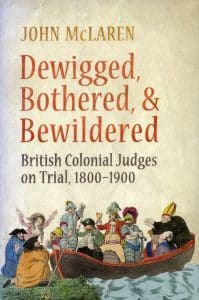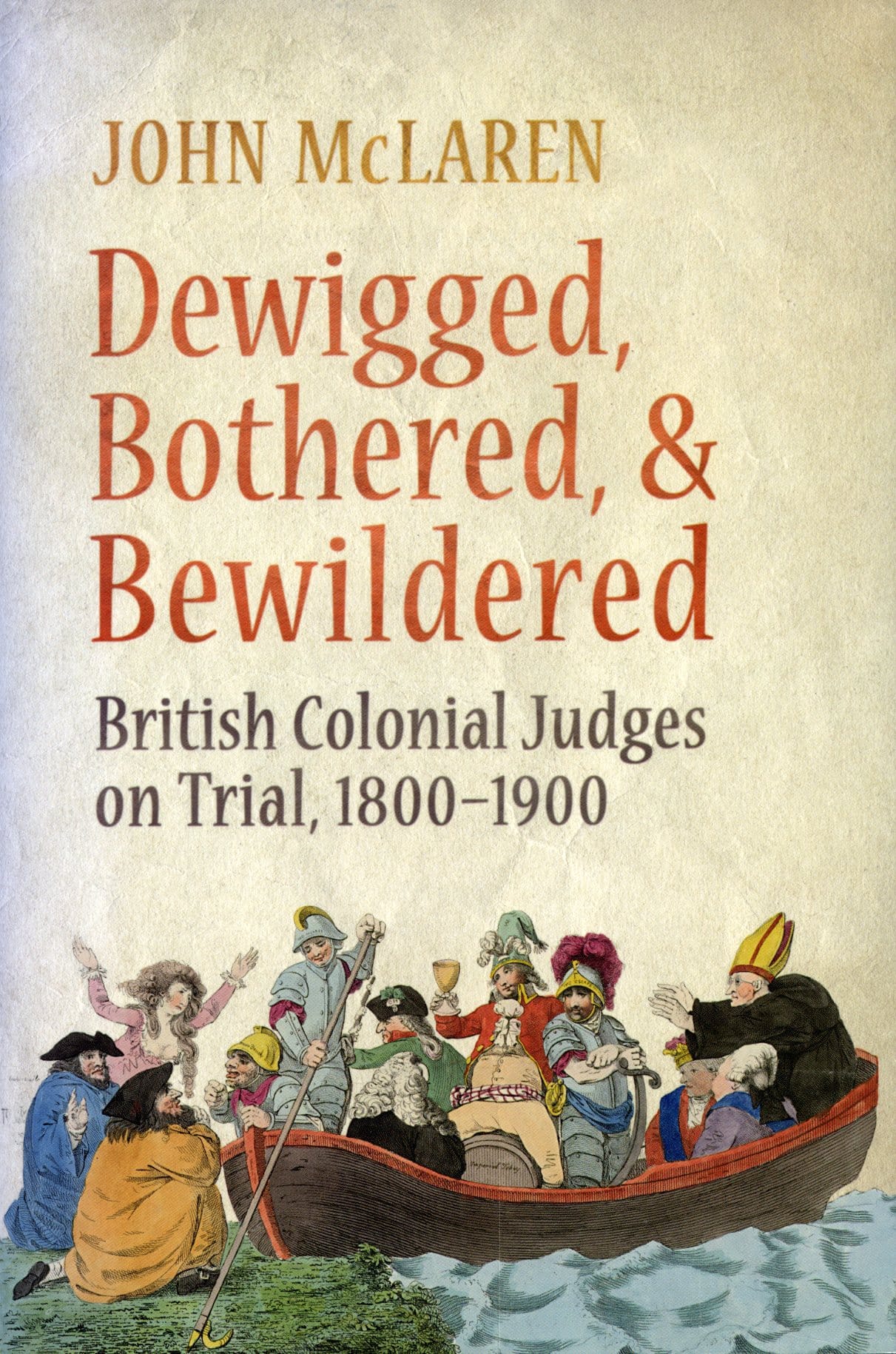 In history, context is everything. While detailing isolated incidents may be of historical interest, a comparative analysis can bring the richer complexity of a period to life. John McLaren achieves this in his 2011 book on judicial discipline in the British colonies.
In history, context is everything. While detailing isolated incidents may be of historical interest, a comparative analysis can bring the richer complexity of a period to life. John McLaren achieves this in his 2011 book on judicial discipline in the British colonies.
This book is a unique history of the relationship between the colonial authorities and those whom they ruled. There have been many studies examining the social, political, cultural, and economic history of Britain’s overseas possessions, but McLaren shows how central the law was to the development of distinctive national identities across the Empire. Moreover, he confirms that legal history is no long solely the purview of lawyers or legal historians. The law has always been, and remains, an agent of social change and development, and no longer occupies a secondary role in historiographical interpretation. Notwithstanding social and political history, the law was significant in colonial development. It was not limited to merely the authority given to judges and colonial administrators, but was noteworthy in defining social and political identity. McLaren reveals how the interaction between law and society, through rights and responsibilities, shaped England’s diverse colonial possessions.
The principle of judicial independence is a pillar of the common law. That notwithstanding, judges sent to the colonies sometimes found themselves on the wrong side of colonial politics. Attempting to impose a new system of government was challenging and the strict imposition of British common law often drew the ire of local administrators and resulted in complaints back to London.
McLaren’s study explains how the vast social, cultural, economic, and political changes of the time interacted simultaneously with the law. These subjects tie in to the major themes of judicial independence and discipline. McLaren traces the trials and tribulations of judges throughout the British Empire over the course of the nineteenth century and in doing so, he illustrates how subtle differences in context affected judicial administration in diverse colonies.
The comparative approach reveals a trend in how “troubled judges” were sanctioned. They were not necessarily removed from judicial duty. Rather, in certain cases, they were transferred to another colony, where they again became problematic for both London and local administrators. Much of the conflict, McLaren points out, concerned the question of authority in Imperial colonies. And, by extension, who retained power to appoint and discipline overseas judges?
This is the substance of McLaren’s book. Despite England’s long legal tradition, establishing legal systems to govern heterogenous colonies was anything but straightforward. When England took took control of many of these jurisdictions, they were initially ruled on an ad hoc basis using a blend of English law and local legal customs and traditions. As such, judges appointed to these distant locations, often trained in English common law, ran into difficulty trying to impose the strict letter of the common law in the face of the expanding influence of local laws.
A greater understanding of the local environment is necessary for appreciating the law and its historical affect on societal development in various regions. There existed in British North America a confrontation between reformist judges and conservatives looking to impose English legal traditions over local legal governance. In Australia, a former penal colony, the conflict was over the repugnancy principle, and whether it was judges or governors who were best poised to determine if a local law was repugnant. Lastly, McLaren explored the British West Indian colonies, where judges immediately encountered social and economic inequality unlike anything they had experienced in the past. This put judges in direct conflict with local authorities and London over how best to improve these conditions.
The stories of “troubled judges” illustrate just how the relationship between law and politics was so visceral but, often times, challenging. Under the best circumstances it is not easy navigating the distinction between law and politics. English authorities – both in London and in the colonies – were confronted with challenging conditions, including the assorted issues associated with “settling” conquored lands, slave ownership, and administering penal colonies. As McLaren points out, these diverse settings sometimes put judges on a collision course with governing authorities when law and politics merged.



